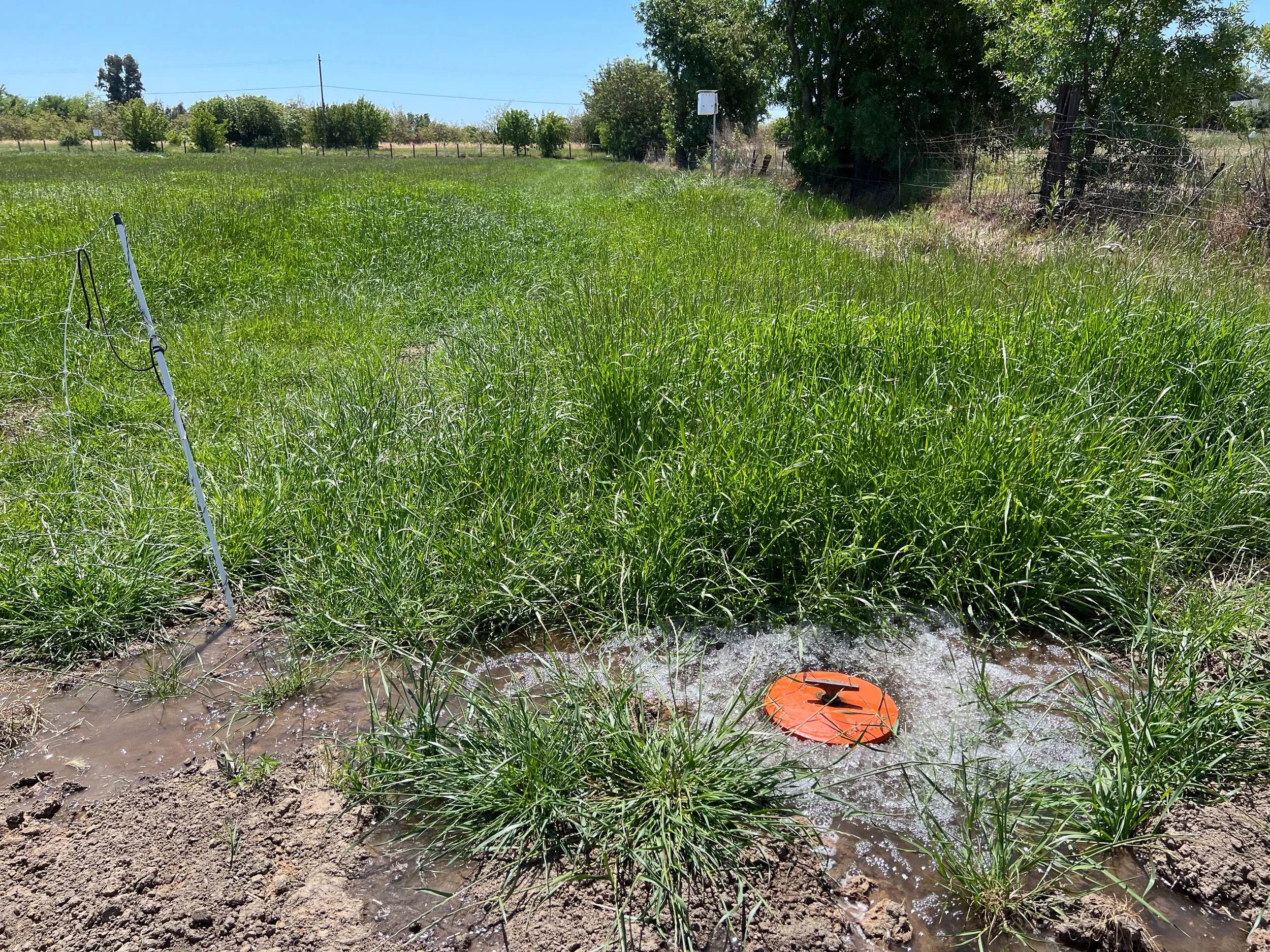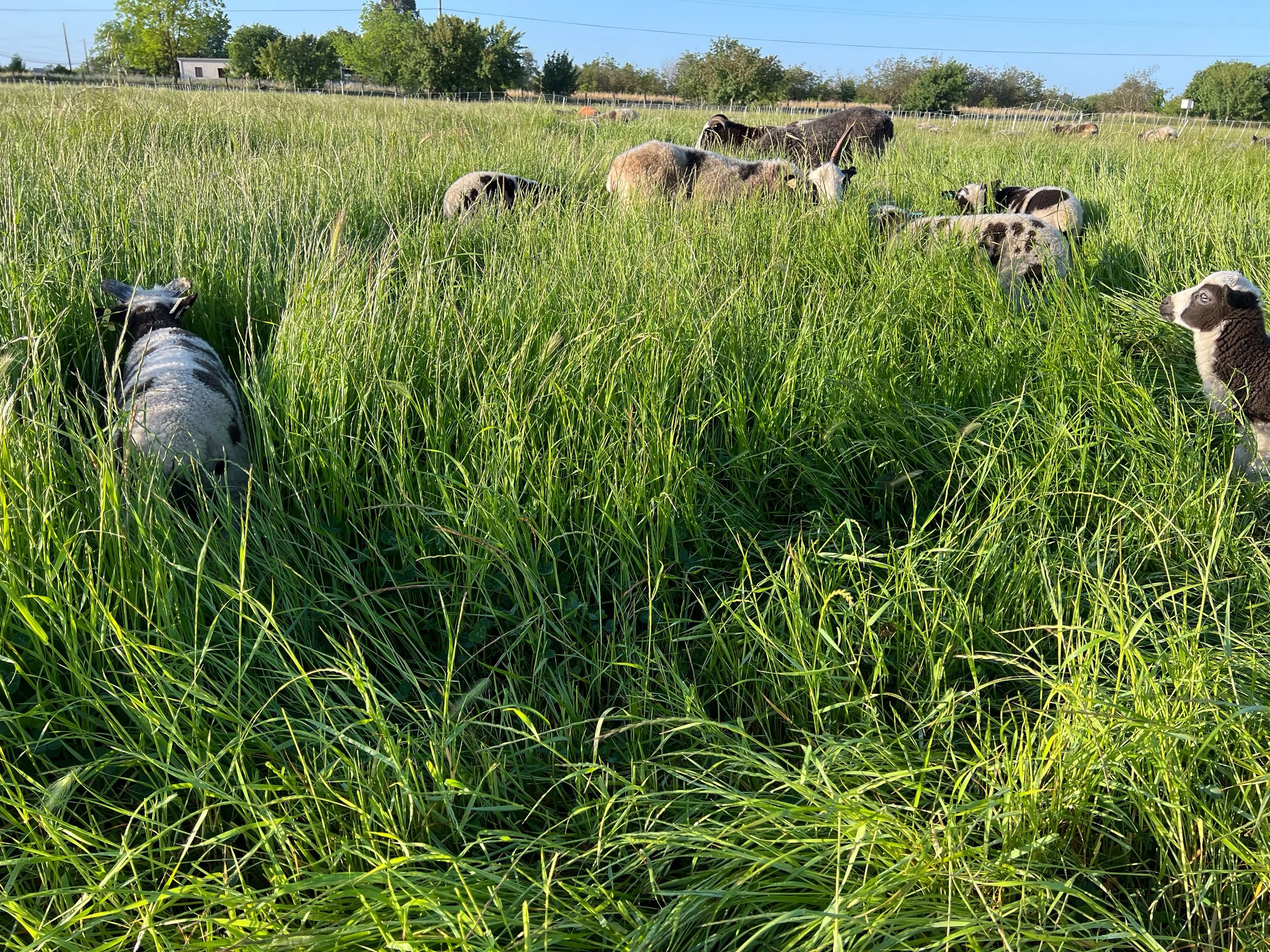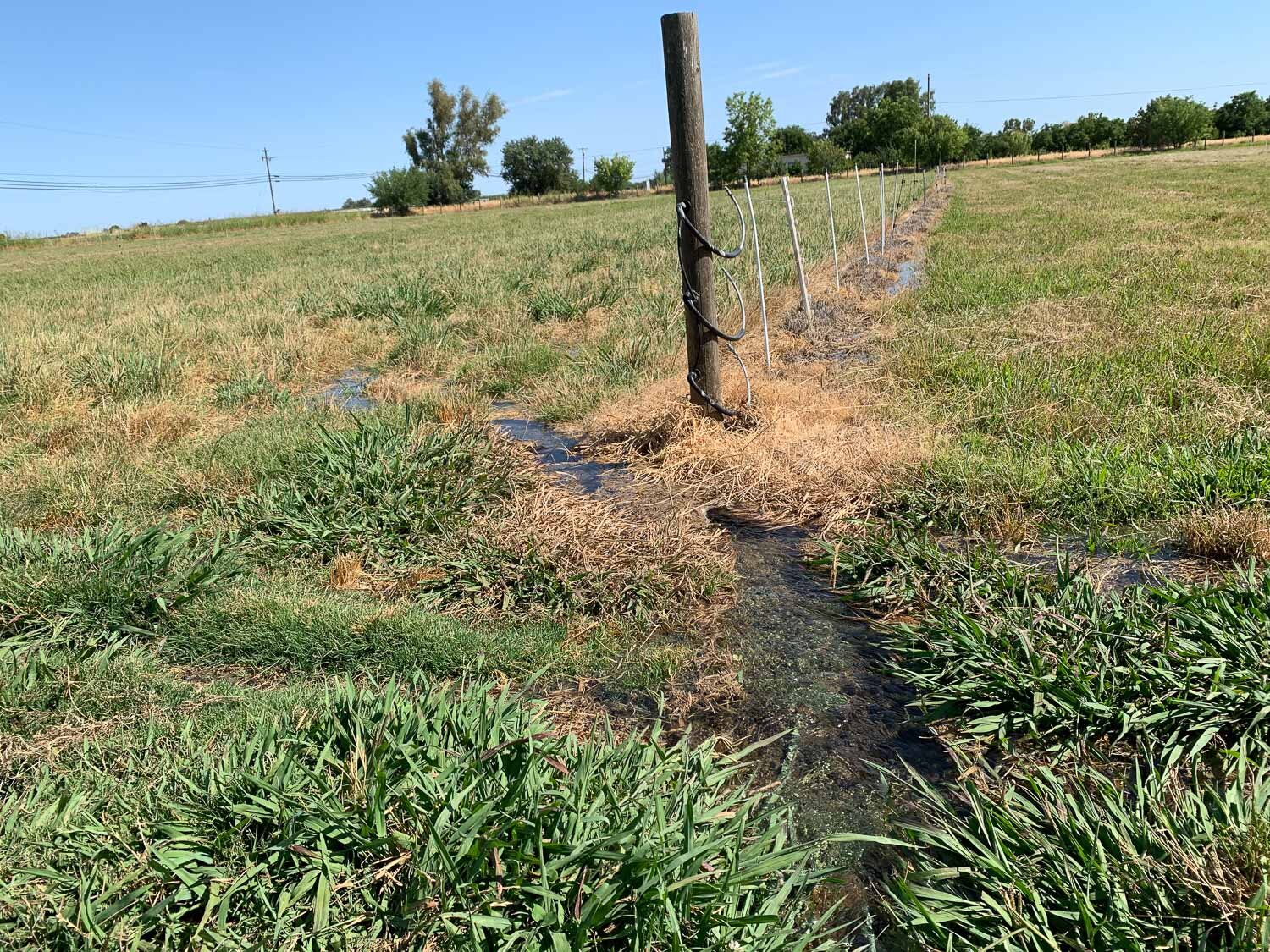Green Grass and Water
/For a year and a half I’ve been writing my blog posts on my old WordPress blog. I haven’t had time to do much lately but decided that this is associated with my website maybe I’ll add one here for now because it will link to the newsletter, with which I’m also behind. Go to the other blog for more frequent posts.
In anticipation of Dan’s knee replacement surgery we got a stack of hay in. At this point I’ve fed most of it. That is Sparky, the bottle lamb from this year.
Due to circumstances beyond our control the new pasture got far ahead of our ability to graze it properly. This is the start of grazing this year.
You can see that as much or more of the grass is trampled than eaten, but it’s better than nothing. And I’ve stopped feeding three bales of alfalfa a day.
We irrigated for the first time with the new pipeline system. Dan had the surgery three weeks ago so I’m doing this part for now. There is a learning curve to how many valves to open, how much open, and for how long. It will be so much better than the old open ditch, but it’s a lot to figure out right now, especially when we are desperate to get this grazed.
There are 7 valves at the north end of the field and 20 across the width here. I couldn’t remember what I was doing and the grass is so tall I couldn’t figure out where they were at first. So I found a strategy to keep track. At 5:30 a.m. I closed # 7-15 and opened #12-20 (not all show here)
Eventually there will be more detail on the other blog where I have a whole series of posts last fall and winter titled “Pasture and Irrigation Renovation” if you want to see how we got to here. This is this morning’s photo. I need more sheep to eat all this grass!

























































